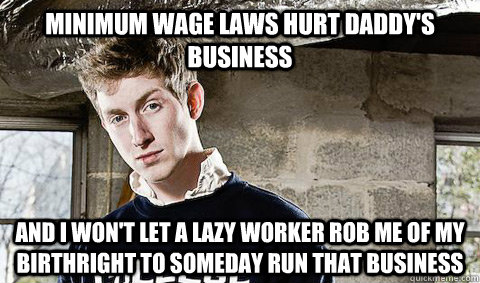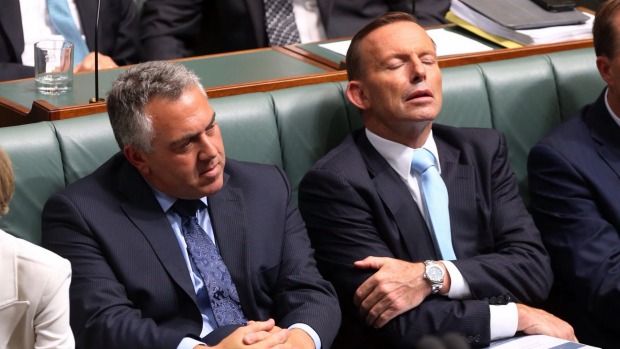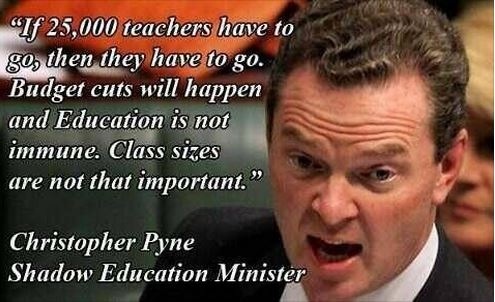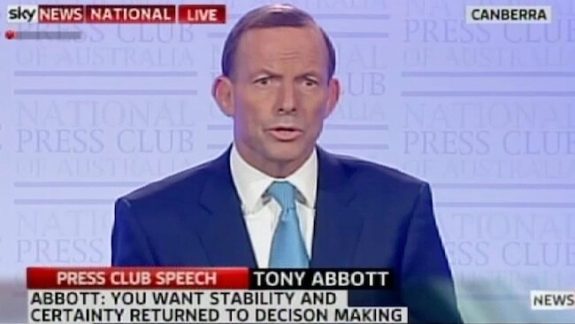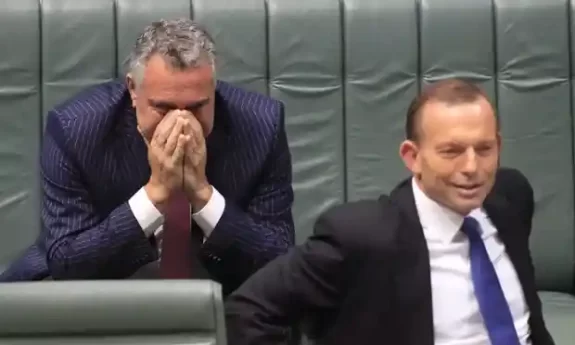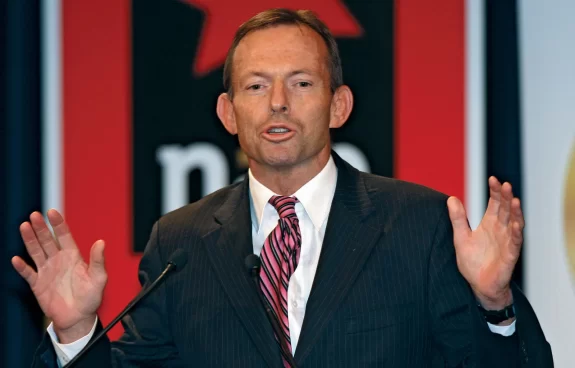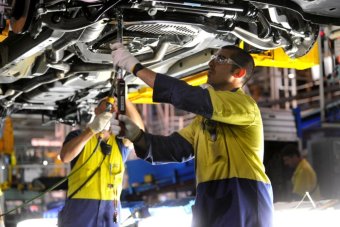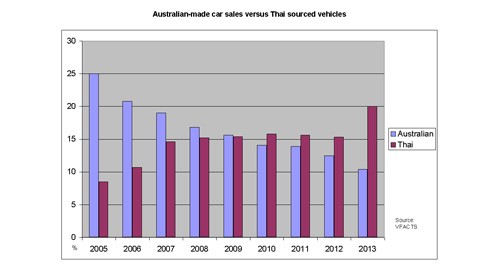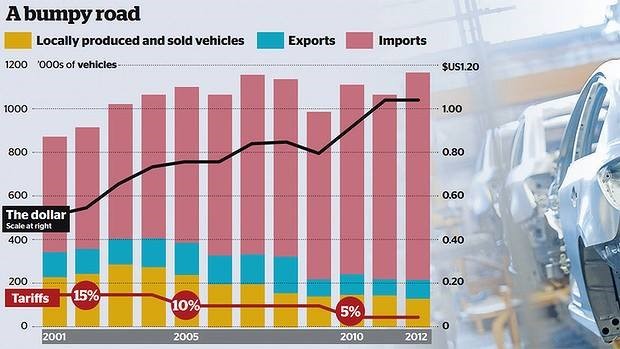Morrison’s Coup De Grâce
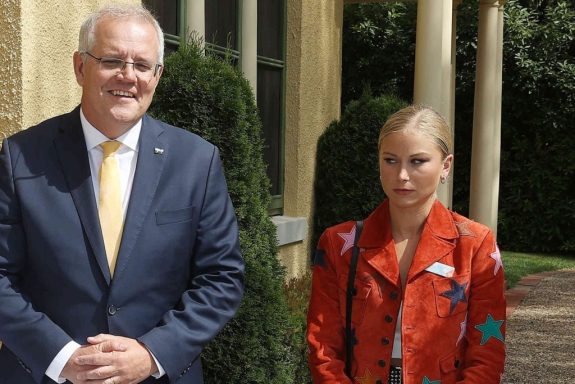
“Human beings are social beings, who need to be able to rely on each other. That requires trust, and trust requires truth-telling.” (Quassim Cassam).
Grace Tame looks daggers as the PM fakes cordiality and avuncular affability for the camera. A black belt in subterfuge, deception and betrayal, ScoMo™ has also mastered the dark political art of baring his top teeth whilst feigning conviviality, positively radiating goodwill and patent insincerity. His office invites 2022 finalists for Australian of the Year for a cup of tea and photo opportunity at The Lodge, his Canberra pad – on occasions when his main place of residence Kirribilli doesn’t suit.
It also sets ScoMo™ up to pretend to Brisbane 4BC, later, that Ms Tame’s an ingrate who’s abused his hospitality whilst he and Jen have invited her into their own home. A farrago of lies of course. Passive-aggressive and patronising, he diminishes and demeans her.
“Grace is a passionate person who’s raised important issues. She’s had a terrible life ordeal, you know, things happen to her, her ordeals, the abuse. It’s just awful.”
Back at the Lodge, Morrison’s toothy rictus evokes the look he had for press gallery cameras just before he knifed Malcolm Turnbull in August 2018, declaring “this is my leader and I’m ambitious for him.”
With no policy achievements and a catastrophic failure to protect us from the pandemic, The Coalition knows the election campaign must be a horse race between ScoMo™ and Albo. Of course, as Paul Bongiorno warns, the Coalition may hold the half senate election in May as it is obliged to. Leave the lower house until September. Punt on the pandemic receding. But odds are long.
For now, it’s character. Whom do you prefer? And therein lies the problem. As Laura Tingle implies, whilst Murdoch’s claque is busy with the myth that we don’t know who Albo is, Faux-Mo’s problem, as a public figure made entirely of smirk and mirrors, is that we do know who he is.
Tame’s face, moreover, evokes some of the ways we know, notes Laura Tingle:
“… other unfortunate handshaking incidents during the bushfires; the excruciating moment when banking royal commissioner Justice Kenneth Hayne refused to be part of Josh Frydenberg’s photo opportunity by shaking hands and smiling with him; the widely circulated photo of Scott Morrison looking at his phone in the Parliament, having turned his back on Labor’s Tanya Plibersek as she addressed him across the chamber.”
There are many others. It’s Cobargo 2.0. Cue the NSW south coast, destroyed by freak bushfire fanned by his government’s policies of climate change denial. Local mother, Zoey asks questions only to have the PM turn his back and walk away from her in early January 2020.
“I have lost everything I own,” Zoey says in a social media post, with footage of the destruction. “My house is burnt to the ground and the prime minister turned his back on me.”
Given his government treats women as second-class citizens and worse, Ms Tame is in no frame of mind to be called into Morrison’s shonky photo-op. Be compromised. She’s brave. On cue, boys’ club commentators and big swinging dick club apologists, rush to attack her display of integrity.
“Sourpuss” sneers Miranda Devine. The News Limited flack, currently based in New York, accuses “Graceless” Tame of “ignorance, petulance” and “churlishness”. And a great deal more.
Morrison is “a leader of a middle power”, Devine ventures, as well as “our elected representative” who is owed respect for his high office alone, a gibe based on a lie about how we choose our PM, whilst she claims a former Australian of the Year (AOTY) is just an ambassador for a specific cause.
The “historic” Lodge also is defiled in Devine’s view. Sacrilege? Clearly, in the next phase of Murdoch’s Americanisation of our politics, it will be sacred. Our White House. A sacred shrine.
Devine’s rant in The Daily Telegraph, also trashes AOTY in a swinging denunciation, a hatchet job worthy of a PMO in full campaign mode. She dog-whistles culture warriors and the hard right.
“The AOTY is rarely representative of the Australian people but instead caters to a tiny base of Twitter brokens obsessed with prosecuting boutique ideological issues borrowed from overseas, usually to do with identity politics, “existential” climate alarm, the evil patriarchy, “toxic masculinity” and “systemic” racism.
Even if the AOTY were to start off as a normal person, by the end of their year in the spotlight they will have been thoroughly shaped into a left-wing activist by the media.”
“Ungracious”, Professor Peter Van Onselen also puns on her name, “rude” and “childish”. James McGrath, dropped in 2008 from Team BoJo for his comments in The Spectator calling African-Caribbean immigrants, “picaninnies” weighs in with “partisan, political and childish.”
There’s much more in this vein but a wave of approval far outweighs the sexist carping and character assassination, rejects Devine’s grotesque exaltation of our least trustworthy PM into an iconic national leader. Devine claims that to snub ScoMo is to insult the Australian people.
Most observers applaud Tame’s integrity. And how would Murdoch’s partisan hacks know what integrity looks like? ScoMo represents everything Ms Tame opposes. Such a pile-on, does, however, suggest a PMO aware that Tame is a major threat to their campaign to re-elect Morrison. A shonky product, which never really passed the sniff test, now smells well past its use-by date.
Perhaps Tame recalls ScoMo™’s office leaking against Brittany Higgins’ partner, David Sharaz. Or Chief of Staff John Kunkel’s “review” that found he was “not in a position to make a finding that the alleged activity took place”. (Sue Gray, take note for your Boris’ knees-up report.)
A helpless young woman is allegedly raped near his office, but the PM doesn’t know, let alone take any responsibility. God forefend he owes any duty of care. Or honesty.
But Morrison’s lies are world-renowned, largely thanks to Emmanuel Macron, and, for him, everything is someone else’s responsibility.
Almost. He’s a dab hand at captain’s calls and gratuitous cruelty. His appointing Amanda Stoker as Marise Payne’s underling, assistant Minister for Women to an invisible Minister for Women looks like an act of sadistic revenge.
The Queensland senator supported a “fake rape crisis tour” that inflicted great suffering on survivors, such as Ms Tame.
Or is it his failure to provide a safe workplace? Tame may have had in mind, Sex Discrimination Commissioner, Kate Jenkins’ finding that sexual harassment and assault were so pervasive in Parliament with its toxic workplace culture that, “women told us they felt ‘lucky’ if they had not directly experienced sexual harassment and assault.”
Who’d want to shake the hand of a PM who pats women on the head and tells the nation “we are dealing with this as no other government has done before”?
“Saying “she’s had a terrible life” is the most condescending, ignorant & utterly disempowering comment to make about Grace Tame.
Grace’s whole message is that as survivors, we are not defined by our experiences of sexual violence,” tweets Nina Funnell who worked with Grace Tame on her original campaign #LetHerSpeak,
ScoMo’s government’s record is of evasion, inaction, lies and leaking against victims and their families. Contempt is only part of its orchestrated disempowerment of women.
Dealing with? Jenkins, in a separate process, recommends imposing a duty of care on employers to stamp out sexual harassment – only to have this rejected by the Morrison government.
Senator Jenny McAllister reminds us that, in 2013, Tony Abbott appointed himself Minister for Women. Eight years later, the contempt continues. ScoMo says women who march on parliament to publicly call for justice, equality and safety are lucky not to be shot. He snubs them anyway.
“This is a vibrant liberal democracy, Mr Speaker, not far from here, such marches, even now, are being met with bullets, but not here in this country, Mr Speaker,” Morrison says to boos, jeers and looks of total incredulity.
Why should Ms Tame, a passionate advocate for victims of sexual violence compromise everything she stands for by being a prop in the PM’s propaganda photo? Even in his words to those invited to the Lodge, ScoMo acknowledges Tame’s engagement to her fiancé, Max Heerey, not her work.
As with his struggle to understand that rape is a crime, ScoMo might need his Jen to clarify his slight – on all women. He’ll have plenty of time after May. Or September, should he take the punt.
Labor’s Jenny McAllister does acknowledge Grace Tame’s work, “together with other survivor advocates, she has driven a lasting national conversation about the treatment of women, and the prevalence of physical, emotional and sexual violence against women and children.”
It’s the eve of Invasion Day or ‘Straya Day as Morrison’s Ocker avatar outside The Lodge would have it. ScoMo’s™ moved on, prompted by focus groups. Sixty per cent of Australians support a change of date, according to a Guardian Essential Poll, taken a few days ago. Meanwhile, his commentary shifts to that of some didactic voiceover to a whitewashing of war and dispossession.
“A story,” he pens for Nine’s claque, mustering his typical fog of abstraction, cluttered with buzzwords and double-speak, “of strength and resilience that spans 65,000 years, of a continent that we love and contend with, and of a free and fair people who live in relative harmony.”
“Remarkable” would have been better than “relative”. And speaking of relatives, Morrison’s great-great-aunt, utopian socialist, poet and former Paraguayan commune member (in 1896), Mary Gilmore, a Dame who wrote for a communist newspaper, would turn in her grave.
Yet only his pet rag, The Daily Telegraph, runs the line that “the arrival in Australia of the First Fleet in 1788 was the initial step towards multiculturalism.” Shades of Tony Abbott’s defining moment.
Grace Tame’s “side-eye” defines our times. Why collude in a photo-op to normalise our criminally, negligent MPs with their hands in the till or doing favours for rich mates? Why approve of skiving off to Hawaii, padding travel allowances or taking a few days off to watch the cricket. Sam Maiden reports Tim Wilson Liberal MP Tim Wilson leaves Victoria for 95 nights, charging taxpayers $37k.
A vibrant liberal democracy does not normalise corruption while it disenfranchises women, the aged, the poor and first nations. It is not a regime of coercive control by old white men that opposes constitutional recognition of first peoples and rejects The Uluru Statement from the Heart.
A voice to parliament enshrined in the Constitution is not only long overdue, it would also enable Aboriginal and Torres Strait Islander people to provide advice to the Parliament on policies and projects that impact their lives. Instead, ScoMo™ & Co. come up with a co-design report. What does it do? It sets up further consultations to establish regional and local voices.
“The only thing the government has managed to achieve is more delays and more processes. What the government is proposing gives the Voice no security. They even banned their co-design committee from speaking about constitutional recognition,” Shadow Minister for Indigenous Australians, Linda Burney calls out the time-wasting duplicity inherent in the process.
Why help normalise a clown? The PM’s “vibrant liberal democracy” allows Clive Palmer to boast he’ll outspend his $93m last election, lying about Labor’s policies. Paul Bongiorno reports Labor strategists who call out Australia’s Clown Prince of Politics for what he is – a way of extending the Liberals’ media campaign budget, which, scandalously, remains uncapped.
“He’s a Liberal and will shovel votes back to them at the end of the day.”
“…the government has done nothing to contain the obscenity of a billionaire being able to distort the democratic political contest in such a blatant way.”
Australia’s reputation for corruption is at its lowest level since ratings began in 1995, reports Transparency International. Morrison’s Covid Commission is a sterling example. A mob assembled by the PM, ostensibly for Covid crisis management turns out to be a gas industry support group.
The scandal of our RATs instant millionaires is another.
Pandemic rages, with at least ninety-eight deaths, Friday, as a government, “getting out of peoples’ lives,” stops sitting on its hands only to point the finger of blame.
Omicron spreads to more than 700 aged-care homes, Rachel Withers reports for The Monthly. Staff struggle to cope in over half of all facilities in NSW. A grieving daughter tells SBS News that her father died of COVID-19 alone in his locked-down aged-care home, while waiting for an overdue booster shot, on the day after Aged Care Minister Colbeck takes three days off to watch a cricket game. Morrison defends Colbeck by telling us we don’t know how hard the Minister works.
Lives have been lost but Colbeck will “take this on the chin,” he adds obliquely. Accountability is not part of his vocabulary. An incompetent spared, ScoMo hopes is a future ally; bound to him in gratitude.
Students will return to school so parents can get back to work. Teachers are put at risk and their value impugned by being seen solely as babysitters in a post-industrial society. And expendable. Vulnerable retired teachers and inexperienced graduates are said to be ready to fill the gaps.
It’s an era of personal responsibility, ScoMo and Perrottet claim. But just try to buy a RAT. Unless you happen to be Motion One, a firm run out of a two-roomed apartment in Sydney’s Elizabeth Bay where Pilates franchise CEO, Austyn Campbell secures a $26 million contract to import RATs.
She flogs them online for $12.50. Identical tests are purchased by importers and sold to Australian retailers for as little as $5 per unit.
A former Liberal Party “digital strategist”, Campbell runs a communications firm, Agenda C, with Parnell Palme McGuiness, another lucky punter who’s also done work for the Liberal Party.
Also doing nicely is Julie Bishop’s beau, David Panton, formerly an all-night chemist in Mornington, Victoria, who with his daughters runs Pantonic, a pharmaceutical supply company. Tests start at $11.
Will it be a RAT-led economic recovery? An overvalued stock market totters, tech stocks shedding value first – Barnaby fan, Georgina Hope Rinehart gets a gong for services to mining, community and sport, just before she’s declared an Olympic sponsor.
Hang on. Help is on its way from BoJo.
So touching to discover that the mother country still loves her delinquent ex-colony. Or not so ex.
Thank God, Queen and her palace that John Kerr, her GG could keep the con in our constitutional monarchy as we were weaning ourselves off the breast of empire, onto a neo-colonial formula.
Our co-dependence helps us feel relaxed and comfortable about the capitulation of national sovereignty that is AUKUS, a pact yet to be defined, but which has a very colonial nostalgia vibe.
Not everyone loves Kerr. A ”rorty old, farting Falstaff …” an elderly lizard” is Patrick White’s vivid impressions of the Governor-General, a respected jurist and former Chief Justice of the NSW Supreme Court, who invoked his “reserve powers” to dismiss Whitlam’s Labor government in 1975, to the immense good fortune of Liberal Malcolm Fraser, a Western Districts grazier. How we miss such giants.
Mal is the last farmer to become Prime Minister, something the Nats have never got over and the only PM to visit to a seedy Memphis hotel, only to lose his trousers – just one leg of which, could be pressed into service as a shroud for his chief legacy, his treasurer. John Winston Howard, monarchist, devout Neoliberal and US lickspittle, who did so much to dash the hopes of voters who sought enlightened, progressive, federal policies which might heal division, promote equality and independence.
As for the AUKUS submarine plan, it’s a fiasco. Eight nuclear subs we cannot crew, or fuel, which need a whole new industry to maintain, with a price tag of at least possibly $170 billion, allowing for inflation, are thrust upon us much to Macron’s chagrin, or emmerdement, a word our prissy press pretend is “piss off” but any Frenchman will tell you means shat upon.
Macron hates our PM for lying to him that the sub deal was real until one day before it wasn’t. It’s a breach of good faith which will set back our trade with the EU circus, of which La Belle France is 2022’s ringmaster. Carbon tariffs could be slapped on our exports. Also, we alienate another power with a presence in the Pacific.
In the meantime, we may have to retire the Collins class subs which will be rust buckets well before our “new” nuclear submarines are ready in the early 2040s. By then, crewless subs and drones will have superseded anything AUKUS hawks us.
But all is not lost. Diplomatic genius, carbon tariff expert and Joke PM, Tony Abbott has been seconded to the BOT, Board of Trade, an outfit long dead in the water until revived by Teresa May as something she could announce that might offset the stench of a hard Brexit.
Tony’s bound to come up with something. Always does. Even if it’s only shirt-fronting Macron.
His work is cut out for him. Career liar, Boris Johnson brags that:
“… our ambitious trade deal with Australia will include a substantive article on climate change which reaffirms both parties’ commitments to the Paris Agreement and achieving its goals, including limiting global warming to 1.5 degrees.”
Tony’s carbon tax expertise will add a bit of finesse to the UK Australia Free Trade Deal virtually inked last month. It’s worthless according to Moody’s. Our beef and veal are more likely to go to more accessible markets which offer higher prices. As Moody’s puts it:
“Australian exporters garner higher prices for their beef products in countries like South Korea, Japan and the US. Also, Australian beef exports recently dipped because of drought conditions. Such conditions are expected to occur more regularly in the future and could restrict exports.”
Glen Dyer and Bernard Keane note that the Coalition refuses to allow the Productivity Commission or any other objective body to analyse the agreement because the benefits are minuscule. Even these dwindle in the light of the extra paperwork required to meet bureaucratic country-of-origin requirements for accessing the deal.
“Given the trivial economic impact of the UK-Australia free trade agreement, we won’t be updating our growth forecasts for the UK economy,” Moody’s conclude.
But it’s worse than nothing. Boris gets rolled. Barnaby Joyce’s carve-out means Morrison won’t have a bar of any deal that breathes a word about net-zero.
Australia’s negotiators demand that temperature targets have no part in the trade deal. When the Brits insist that The Paris Agreement to keep the global temperature rise to well below 2 degrees, and preferably to 1.5 degrees at least gets a mention, that’s all it gets and only over Morrison government objections.
But who’s going to notice the cave-in when the party’s all agog at revelations that Boris has lied about at least eleven parties that broke Covid isolation rules?
Party piece of party gate is surely BoJo’s glorious anniversary of his own birth, alas, another mental blankety-blank which he either can’t recall or, like fellow amateur casuist, ScoMo, argue wasn’t a party at all.
Boris’ colleagues are a riot of goodwill, a British ten-minute effusion of camaraderie, a happy birthday dirge and a cake with a Sue Gray file in it.
BoJo’s birthday party that his (fairly) newly-wed, a May bride, organised for him is the latest episode of Carrie On Upstairs, a fitting sequel to the mystery of who paid for the 840 pound a roll golden wallpaper in the refurbishing of Boris and Carrie’s flat over number eleven Downing Street, traditionally reserved for the chancellor of the exchequer except when Boris needs it for himself, his partner and growing family.
If we are conned on trade and it looks as if we’re roped into buying obsolete subs we won’t have any time for our war on Beijing, Keane suggests we just tell China to hold off for a couple of decades while we get our nuclear underwater shit together. What could possibly go wrong?
It’s not clear which of our neo-colonial masters will actually supply the ships. Morrison loves secrecy as much as indecision. DFAT tells us that by 2020’s end, Australian investments in the US totalled $864 billion – almost as much as the Great Satan – as America is revered in Iran, Iraq and Afghanistan whose peoples it has liberated, with our assistance – the USA has invested in the Land of Oz while our investment in the UK was $615 billion – and the Old Dart has $737.6 billion invested here.
All of this is a prelude to hope. Amidst the amazing Grace Tame’s refusal to grin and bear the PM’s charm offensive, a perfunctory line congratulating her on her engagement rather than her work as Australian of the Year, the shortage of RATs and ScoMo™ & Co’s abandonment of all pretence at protecting us from Omicron, the arrival, Friday, of UK Foreign Secretary, Liz Truss, aboard a Global Britain private Airbus jet is a cunningly orchestrated stunt that gets BoJos rival out of his hair while providing audio-visual proof of ScoMo and Cos trade deals.
True, Little Britain’s Labour Party is outraged at the A$1 million price ticket but wait until they discover that the Free Trade Deal with the land Downunder is just another bit of window dressing.
Hawk Talk is also a big part of Truss’ mission. Eager to be Boris’ replacement and one of our neo-colonial mistress’ Britannia’s debauched ruling elite, Truss pops in to warn us that the Chinese Panda is plotting with the Russian Bear to blow us all up, a warning that Paul Keating calls demented.
Truss attacked Dan Tehan last year, because she felt slighted but now, she is practically one of us after being made honorary Ocker of the Year, last year by The Australia Day Foundation.
The dodgy Foundation is a cabal of climate deniers, mining shills and lobbyists with links to the ultra-right Policy Exchange, a group affiliated with those who spread disinformation on climate change and covid.
Many see Liz as Little Britain’s next Tory PM, if only party animal and pants-man, Boris Johnson would admit the carnival is over. Or Sue Gray busts him for breaking his own social distancing rules by holding parties. Seriously.
Her man bag, Ben Wallace, is a Boris-follower, too, over-promoted for his loyalty to Defence Secretary.
Ben and Liz are AUKUS hawks who talk up a Blairite WMD-type case for declaring war on Russia, just because America wants them to, a scenario, the invisible Marise Payne and Minister for Defence, Peter Dutton find incredibly compelling and not just as an election campaign stunt.
All is well in the Land of Oz, even “a smoking ruin” of democracy as Guy Rundle praises us. Deputy PM and MP for Santos, Barnaby Joyce tells ABC RN Breakfast’s Patricia Karvelas that “people aren’t dying” in the Lucky Country of Covid. Rats are wrecking his government’s superbly orchestrated pandemic testing kit rollout by hoarding their RATs (Rapid Antigen Tests) – or flogging them at prices to rival the can-do capitalism of professional gougers and your local Chemist Warehouse portal.
Finally, Labor’s leader responds to Andrew Probyn asking who he is:
“My first campaign, I was 12 years old,” Albo tells the Press Club. “We organised a rent strike. We took petitions around to everyone. That was my experience of that. That drove me. That was my first political campaign. And, by the way, we won.”
“Just ‘pushing through’ this pandemic is not enough,” he argues. “We need to learn from it, we need to use what the last two years have taught us to build a better future.”
We need “a government that steps up to its responsibilities and fulfils its most fundamental roles: to protect our people, to act as a force for good, and to change people’s lives for the better.”
No wonder Morrison’s running scared. But pumping social media with Clive$’ lies about Labor’s failings is unlikely to cut it when your record reeks of corruption, ineptitude, dud deals and untrustworthiness. The worst PM of the century can’t even show some grace under friendly fire at a reception for Australian of the Year, a miserable morning tea, brightened only by a bevy of nominees for awards, any one of which is likely to show up his own inadequacies as a man and as a leader.
To pick a fight with Grace Tame, moreover, and to go on radio, later, to belittle her, may cost Morrison any last skerrick of credibility. His pot-shot at Grace Tame, Australian of the Year 2021 is by extension an attack on all women and every woman’s right to expect a government that offers equality, justice and safety for all Australians, instead of a racket run to benefit a privileged few.
Given his lies, his stunts, his broken promises, his empty promises, his protection of incompetent ministers and worse, together with his government’s catastrophic mishandling of the pandemic, his pot-shot at Ms Tame maybe his coup de grace.
Like what we do at The AIMN?
You’ll like it even more knowing that your donation will help us to keep up the good fight.
Chuck in a few bucks and see just how far it goes!
Your contribution to help with the running costs of this site will be gratefully accepted.
You can donate through PayPal or credit card via the button below, or donate via bank transfer: BSB: 062500; A/c no: 10495969










